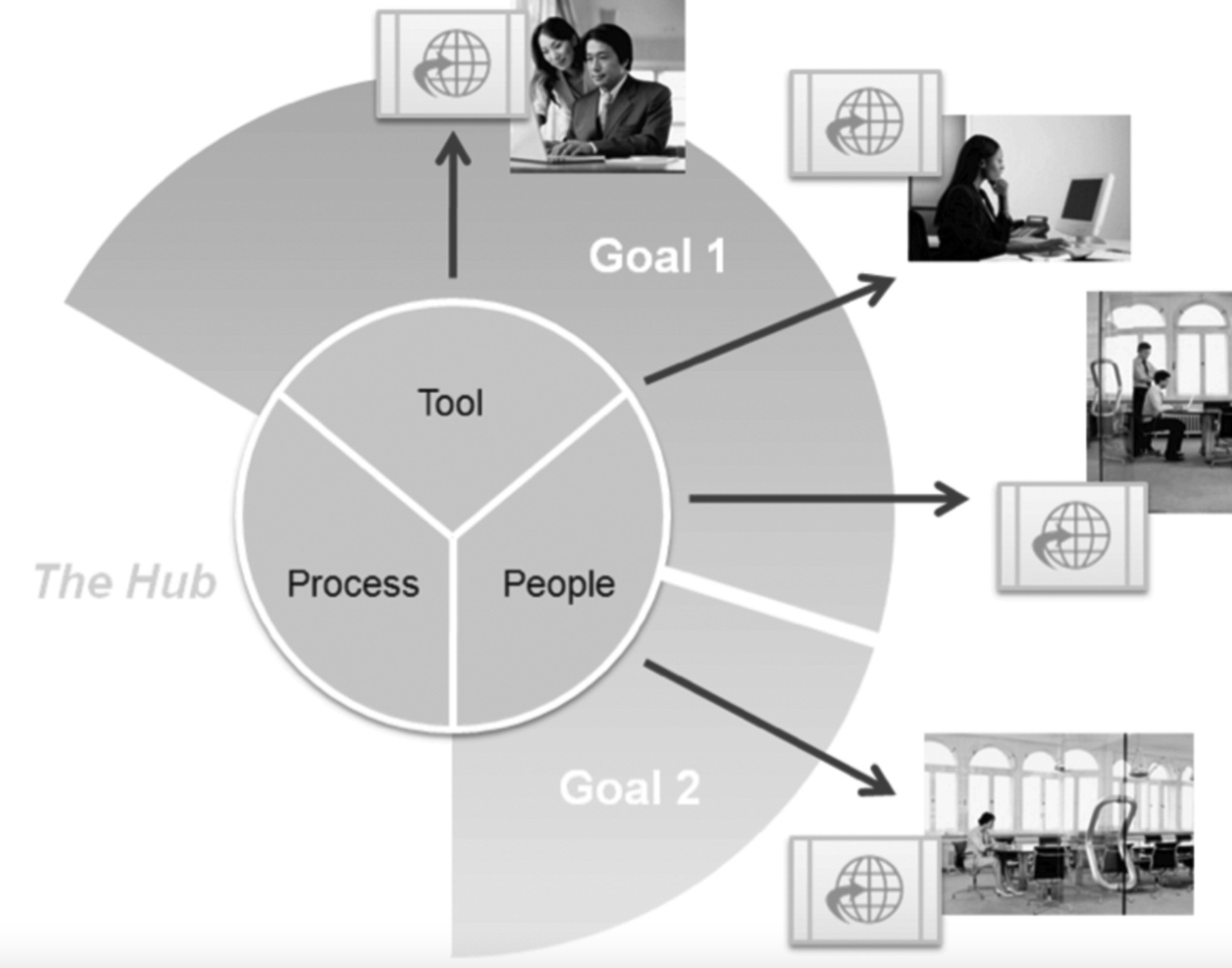Defining Key Performance Indicators
Photo by Carlos Muza on Unsplash
MKT 410 - Digital Analytics
The importance of defining key performance indicators (KPIs) that align with an organization's business goals is detrimental to any business or organization. They can be either tactical or visionary KPIs. The visionary KPI is what your company wants to achieve with big goals and defined metrics. This can be described more as “the big picture” goal that “drives change or helps your company build its culture” (Jackson, 2015). Compared to the tactical KPI, it depends on the individual goals and objectives set within every business from the hub and spoke model.
Figure 1: The hub and spoke model. Source: Cult of Analytics (2nd ed.). Taylor & Francis. 2015
KPIs are a form of measurement in the digital space, either a count or ratio used as part of a business strategy. A specific dimension from this unit of measure is “a general source of data that can be used to define various types of segments or counts and represents a fundamental dimension of visitor behavior or site dynamics” (Jackson, 2015). For example, an event has taken place that can be counted and quantified, such as how many unique (new) visitors land on your website.
Here are some other examples of how KPIs are used:
To check the total website traffic during a specific time (monthly, every four months, or one week). This is called aggregate.
There are different groupings of where exactly your website traffic came from (an email, a social media post, an affiliate link, a Google Ad). This is called segmented.
And the different ways that a visitor interacts with your website. This is called individual.
Other vital KPIs that can be created also depend on what your business counts as a success and is valuable information. For example, conversion rates are significant to measure what is considered a conversion for your business, such as purchasing a product from your store, signing up for an online newsletter, or simply interacting with a video on your website.
Another KPI to measure to gain insight is the bounce rate and average duration per session time. This can provide helpful insights to businesses as they compare how much time their website visitors and potential customers spend online. Do they leave after a few seconds? Or do they stay longer than 5 minutes? If so, it could mean that your content isn’t what they were looking for, isn’t very clear, or wasn’t engaging enough for them to stay. By gathering this data, businesses can make more innovative changes and improve their business strategy to capture their audience. Many KPIs can be set, and it’s essential to understand that each company will be different based on what they want and need to measure to optimize their website fully.
References
Jackson, S. (2015). Cult of Analytics (2nd ed.). Taylor & Francis. https://mbsdirect.vitalsource.com/books/9781317561880

